
Wickenheiser is probably the most notable female player in the world of professional hockey. She broke all the rules in male dominated hockey when she became the first woman in hockey history to play in the professional arena in a position other than the goalie.
Born in 1973 in Saskatchewan, Canada, Hayley’s love of hockey never stopped her and she started out by playing on the boy’s teams. By the age of 13, she assisted Team Alberta to win the gold medal for the girls-under-17 event in the Canada Winter Games. Hayley became a well-known player when she was given the coveted title of Most Valuable Player. The young athlete continued to pursue her dream and when she was 15 she found herself in the Canadian Women’s National Team international competition.


The 1961 Rose Bowl prank involving Caltech and the flip card switch is absolutely legendary. College pranks are notorious and engineering schools seem to produce some of the best of the bunch. With the introduction of electronic scoreboards, the ability to introduce a whole new genre of technology oriented pranks were opened up wide; especially when considering the genius of those attending a tech college. Overcoming the 1961 ordeal has become a badge of courage and, in 1984 Caltech did it again.
In 1983, the president of Caltech, Even Murph Goldberger, taunted the students that they should never rely on the past results of those that were their predecessors to prove their worth. The ‘Techers’ were not going to stand by and let this challenge go and so they took it on, full force.

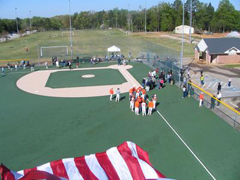
The Miracle League is part of the nationwide organizations that set up playing fields for special needs children and adults. Unlike a standard playing field, there are extra safety precautions that need to be considered for players and families on the field and in the stands. A new Miracle League baseball field is soon to be opened in Sarasota, Florida. The surprise donation of $10,000 is allowing them to add some of the necessary upgrades, including an electronic scoreboard.

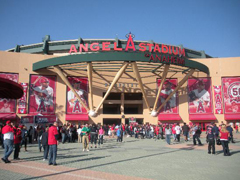
In this age of multi-tasking, social media and high tech frenzy, it seems we are seeking some areas of our lives that are comfort zones. Many are recognizing that constantly being ‘connected’ is not always psychologically healthy. I have found that one common comfort zone is often found attending a good old fashioned baseball game, complete with vendors and scoreboards.
The thought of a sports scoreboard as part of a comfort zone might seem odd to some. But, for me, it is a remembrance of childhood. Attending softball games for my Mom’s team, the scoreboard was part of both the home and away games. My sister and I would sit in the bleachers on warm summer afternoons and evenings, watching my mom and her team mates as they played with every ounce of devotion they had. We yelled with excitement as each run was completed and the then manual scoreboard had the point added.

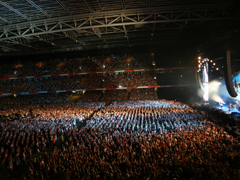
Throughout the years, I have attended more concerts than I can count. I wish I could say that I always had a good seat; but, like most of us, I often ended up so far away, that the performers seemed little more than tiny doll figures. When one is sitting in the ‘nose-bleed’ area, the other major problem has always been the sound quality. Even the best of stadiums and arenas could not offer anything other than a fuzzy echo. In those days, the thrill was to simply say “I was there”; but not so anymore. The electronic scoreboards of today are more than just for the sports fans; they have become a major part of a concert experience, bringing the excitement to every seat in the house.
Whether you are into classical, rock, reggae or pop, attending a concert is completely personal. The event is the highlight that caps your collection of CD’s or downloads and brings a moment of life to the music. There is always a static electricity in the mood of the crowd before a concert and the buzz and hum that occurs just prior to the dimming of the lights. Once darkened, the era of the electronic scoreboard changes the scene as a high tech, color blasted visual blasts into view.

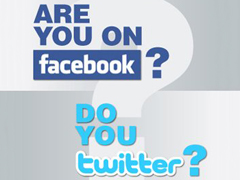
There is no denying it; we are in a tsunami of social media and internet awareness around the world. From political events in the news to sport events in local and national games, every person is checking their Facebook and Twitter updates and communicating like never before seen in the history of humanity. Keeping up with this technology race in the electronic scoreboard arena is pretty much a no-brainer, and benefits all that are involved.
Coordinating electronic scoreboards with the internet and social media involves a deliberate and well though out marketing plan. The electronic scoreboards of today do have the ability to do wifi net feeds, but, there is more that is involved than sending information to a page. If you are involved in the project of adding electronic scoreboard information to the net, you need to understand the psychology and differences.


If you are older than 30, you have experienced a wash of technology that has no comparison in the history of humanity. The New Milleniums have no concept of what life was like without ‘the net’ or cell phones and most are connected with social media to the point where they are in contact with their bff’s at all times. While the Baby Boomers are now the largest group adopting smart phones, there is still a bit of a disconnect when it comes to the many other areas of technology. It depends upon the expert (and the age of the expert) that you talk to regarding the pro’s and con’s of our fast pace race with high tech.

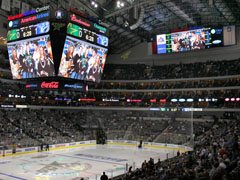
We are in an era where technology is moving faster than the average consumer can keep up. There is one area that surpasses all others in the demand for high tech: sports. The nation’s sports fans are insatiable for bigger, better, flashier and brighter. The American Airlines Center in Dallas Texas is quite aware of the demand and is surpassing all expectations with the recent installation of their new 1080 high definition replay and video system. This is part of their continued effort to live up to the promise they made to fans to offer the best in technology.
Fans of the Dallas Stars and Dallas Mavericks will be participants in viewing the new scoreboard that boasts a 300 percent scoreboard increase in resolution in their two video displays. This unique system is setting the bar high for stadiums and is a new generation in both visual and audio for the fans. Quality LED technology offers brighter, clearer pictures so that even the most remote fan in the stadium can see what’s happening.

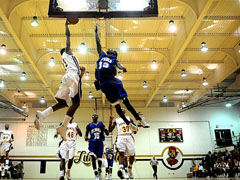
There is probably nothing more devoted than a community member to their local high school sports teams. Whether a parent or teacher, we seem to be more involved in the sports events than often the national leagues. Every aspect of the games work their way into our daily lives: fund raisers, ticket sales, and above all – going to the games. So when the local high school needs a new electronic scoreboard, this brings our attention to the forefront.
You might think a scoreboard is a small consideration. Au contraire. In this day and age of fan participation, sponsorship and advertising, the quality of the scoreboard is now front and center compared only to the topic of the field itself. The investment process must take into play various factors: indoor or outdoor board, size, visual quality, audio additions, colors and advertising opportunities. Each of these areas will affect the overall success and must be appealing to the fans. When the topic of a new electronic scoreboard is being discussed at the local high school, everyone in the town becomes part of the conversation.

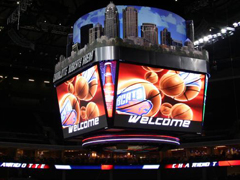
Anyone that has recently been to a stadium for a sports event or concert has probably witnessed the next generation of electronic scoreboards. What started out as an informational display so many years ago is now the state-of-the-art for visual and sound in complete entertainment.
A few years ago, scoreboard manufacturers took a good hard look at the type of high def and quality in-home theatre experiences that were available for purchase. In order to compete, they had to develop something bigger, better, and with more flash than something that could be found at home. Thus entered the new high definition, high quality, large video screens. They partnered with quality sound companies to add a touch of excellence in a closer-to-surround sound ability, and the audio visual senses are complete.



